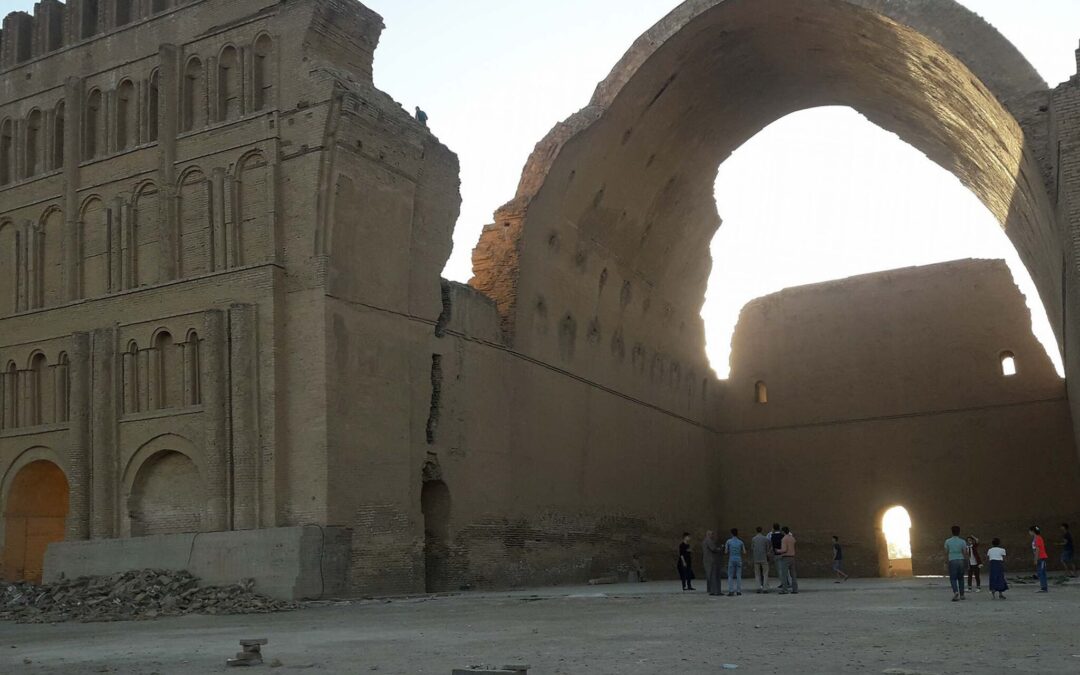A Middle East country covering more than 435,000 square kilometers with a population of 43.5 million, Iraq is believed to be home to one of the earliest known civilizations during the prehistoric period of Mesopotamia. Because of its rich history, the country’s buildings and iconic landmarks are influenced by a variety of architectural styles from the Umayyad, Abbasid, and Ottoman periods. By the 1950s, with increased financial power due to oil revenue, Iraq began inviting foreign architects to design buildings influenced by modern styles.
As a result, Iraq today features a mix of ancient structures and monuments, many of which feature ornate and intricate designs, and multi-million dollar buildings with modern aesthetics. Below are six examples of Iraqi architecture.
Erbil 1 Tower
A planned postmodern-style building in Erbil, the E1 Tower, or Zaniary Tower, will be the tallest structure in Iraq when completed. Construction began on the 48-story, 591-foot multi-use skyscraper in 2019 and is expected to conclude by 2024. At present, the Central Bank of Iraq, at 564 feet tall, is the country’s tallest building. Lafarge, a French company that is Iraq’s leading concrete supplier, has supplied as much as 40,000 cubic meters of concrete for construction of the E1 Tower.
Dr. Bahman O. Taha and MSc. Kovan Azeez, the lead structural engineers of the project, carefully designed the tower, particularly its lateral-force-resisting system to protect it against forces of nature. The area in which it is being constructed frequently has heavy wind gusts coming from the flat plains and lowlands, while the region, near the Arabian-Eurasian fault line, is seismically active and had an earthquake exceeding 7.2 on the Richter scale as recently as 2017.
Forty-six of the E1 Tower’s 48 floors will be above ground. The building will have more than 400 apartments, an open view restaurant, and other facilities, and will be serviced by eight elevators.
Taq Kasra
Also known as the Arch of Ctesiphon, the Taq Kasra is an ancient monument that serves as Iraq’s only reminder of the ancient city of Ctesiphon, a settlement southeast of Baghdad along the eastern bank of the Tigris River. The 121-foot arch, believed to have been constructed 1,400-1,700 years ago, is the world’s largest single-span brickwork structure without reinforcements.
A masterpiece of Persian architecture, the unsupported, semi-circular arch represents the union of heaven and earth and was meticulously built by layering and bonding bricks in a technique known as “true arch construction.” The exterior of the arch features intricate ornamentation, including inscriptions, geometric patterns, and floral motifs.
Great Mosque of Kufa
An historically significant building about 170 kilometers south of Baghdad, the Great Mosque of Kufa is believed to be among the oldest surviving mosques in the world and was once the home of the Prophet Muhammad’s son-in-law Ali ibn Abi Talib during the seventh century. It is also the site where the Shiite political and religious ideology was formed.
While some ancient buildings in Iraq are in ruins, the Great Mosque of Kufa is an enormous complex that has regularly been renovated and expanded upon over the years. Today, the mosque features nine sanctuaries and four minarets and covers 11,000 square meters. It is accessible via five grandiose gates.
Basra International Stadium
Construction on Iraq’s largest and most architecturally impressive sports venue, Basra International Stadium, broke ground on January 1, 2009, and was completed by October 2013. The 65,227-seat venue is also called the “Palm Trunk Stadium” because of the resemblance of its external facade to the bark of date palm trees, a calculated decision by designers to reflect Basra’s abundance of date palm tree fields. The multi-level stadium also has 20 suites, 230 VIP seats, VIP lounges and restaurants, and is covered by a curved, steel cantilevered roof.
In addition to its main venue, the $550 million sports complex includes a 10,000-seat secondary stadium, additional sports facilities, and four five-star hotels. Iraqi Premier League teams Naft Al-Basra SC and Al-Minaa Sports Club play their home matches at Basra International Stadium. The stadium also hosted the 2023 Arabian Gulf Cup and friendly and competitive matches involving the Iraq senior men’s national football team.
Great Ziggurat of Ur
One of the most visited monuments in Iraq, the Great Ziggurat of Ur is among the many ziggurats (terraced pyramids with no internal chambers usually made of mud and brick) that King Ur-Nammu built in the ancient Mesopotamian city of Ur. British archaeologist Sir Leonard Woolley led an excavation of the Nasiriyah site during the 1920s and 30s to discover the remains of the ancient ziggurat, believed to have been constructed in the Early Bronze Age around 2100 BCE.
The top of the ziggurat has a temple that was built to honor the Mesopotamian moon god Nanna. Among locals, the Great Ziggurat of Ur is called the “Etemenniguru,” which means “temple whose foundation creates an aura.”

